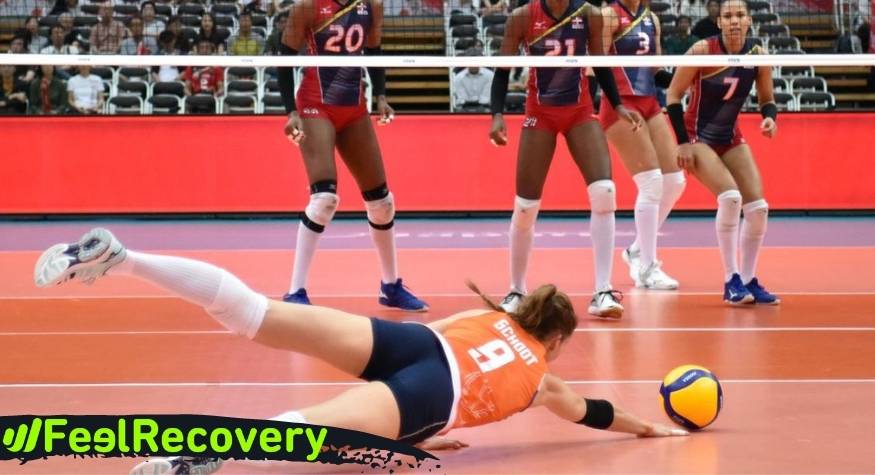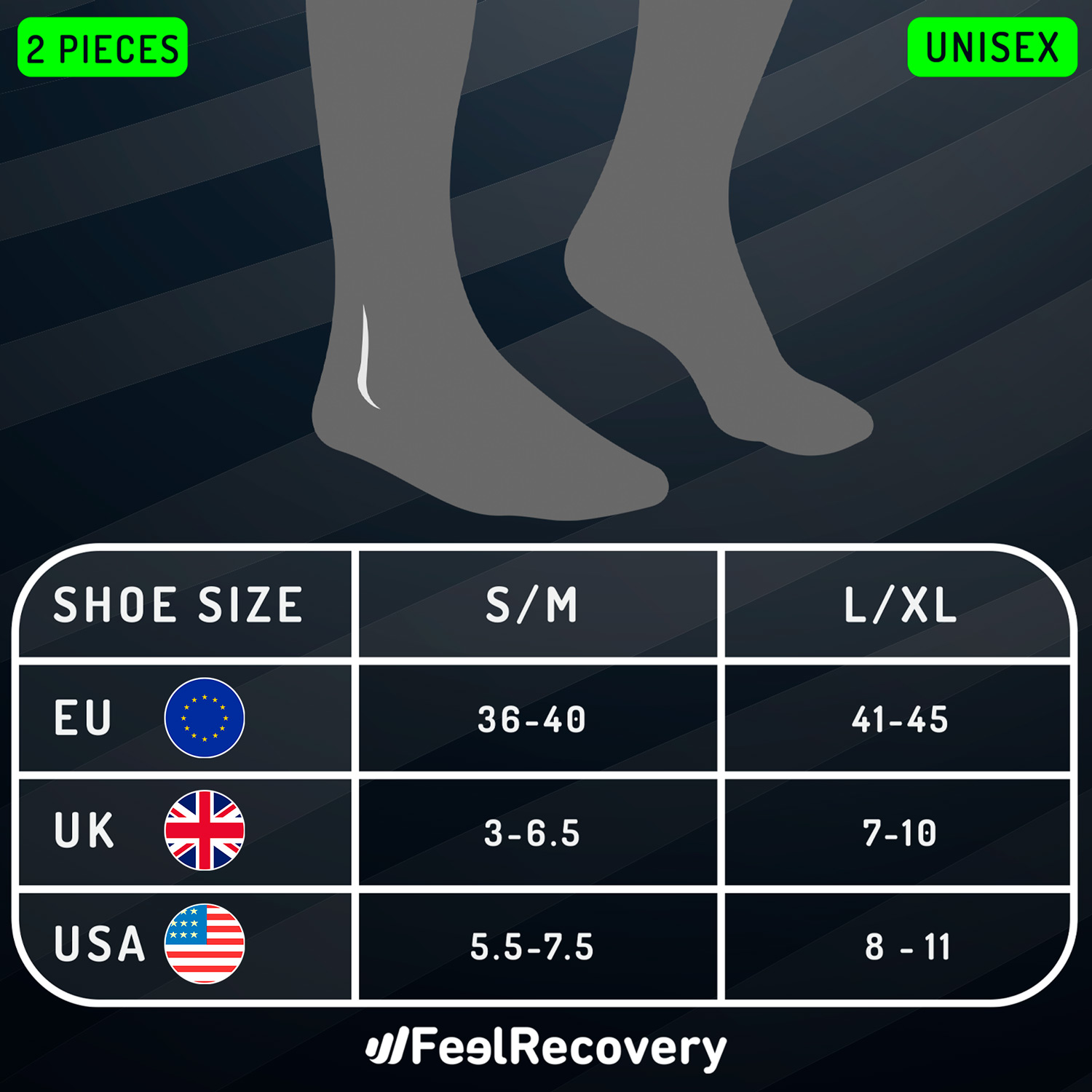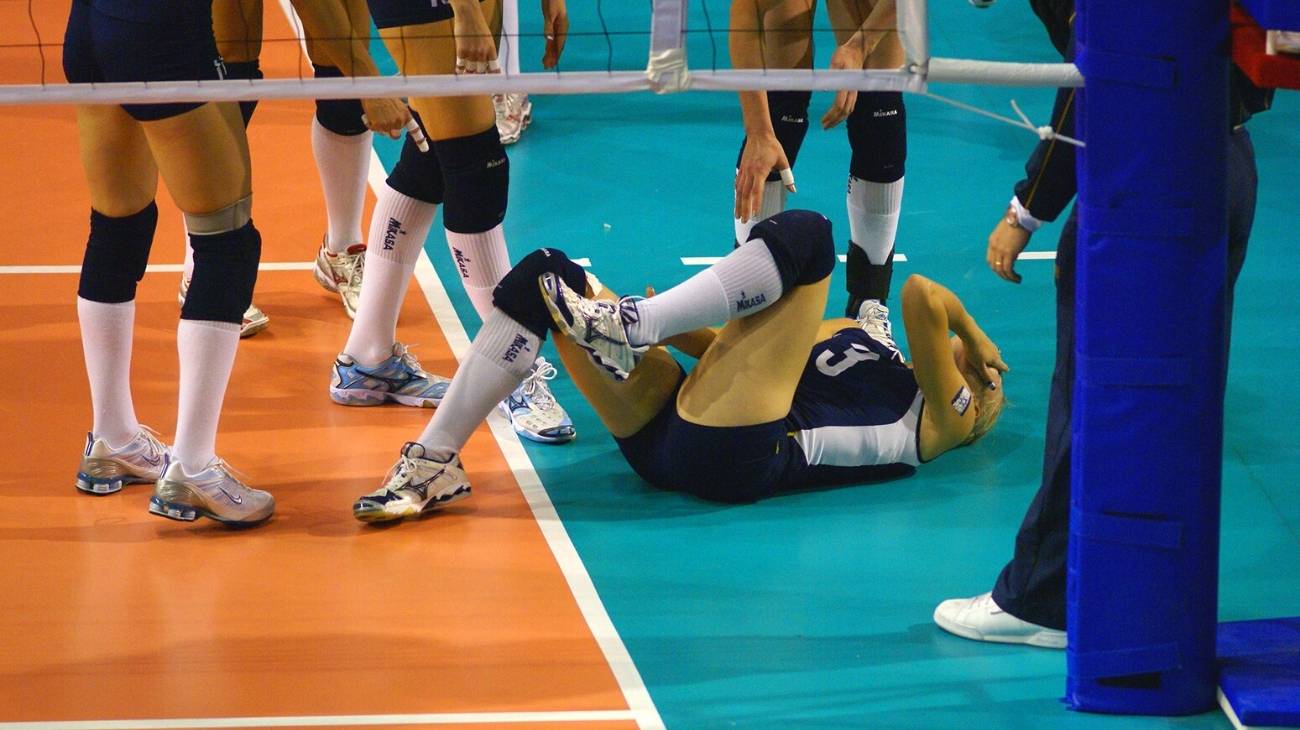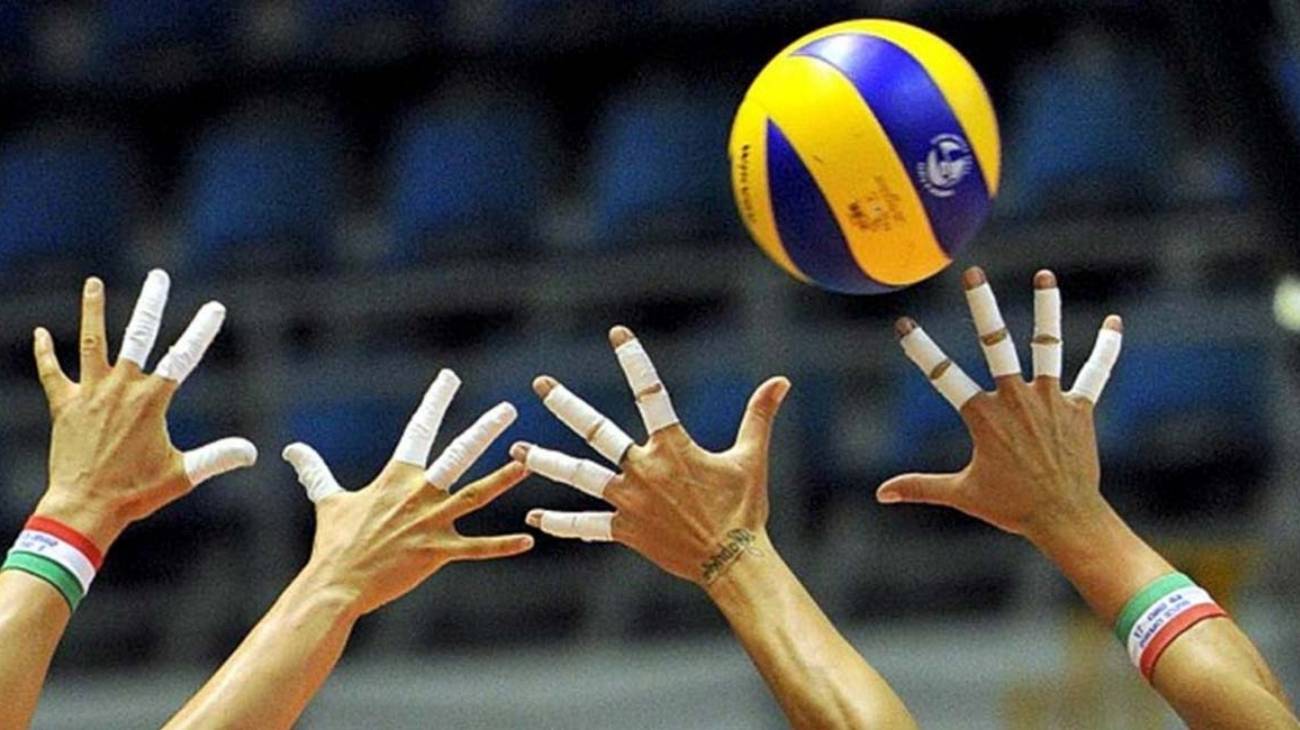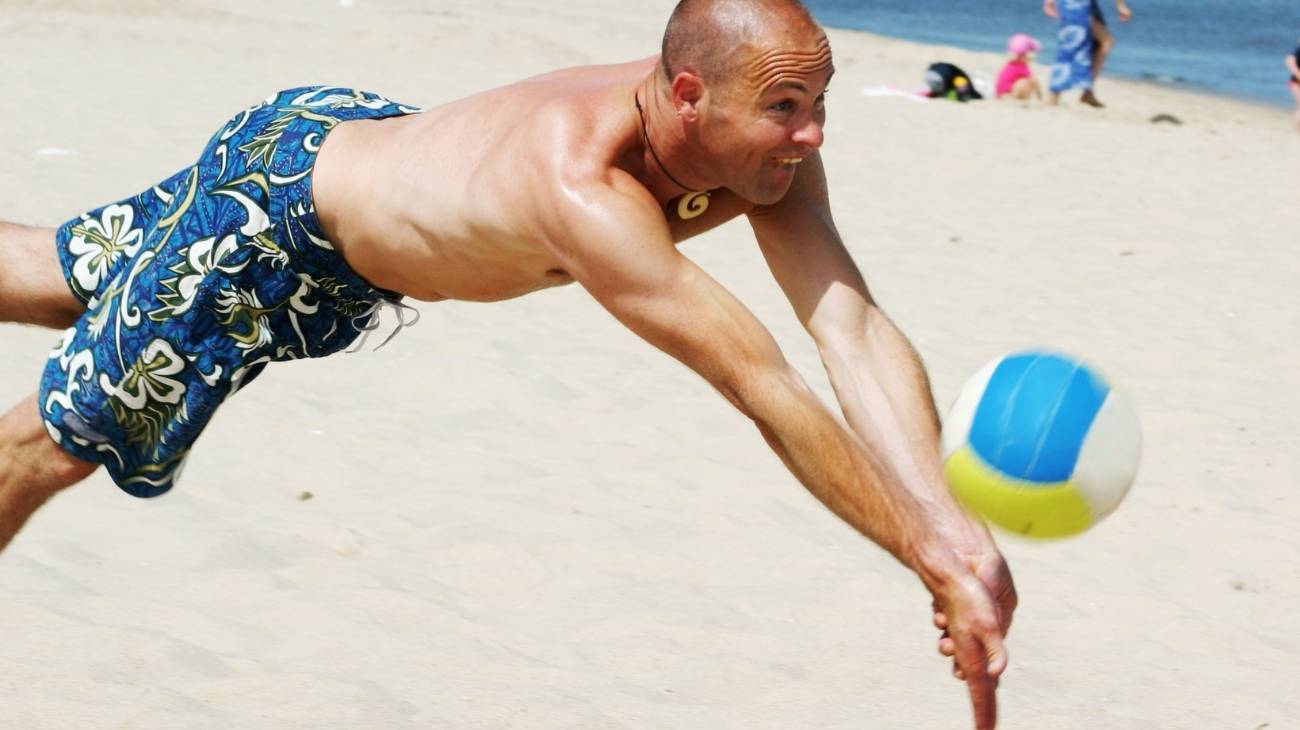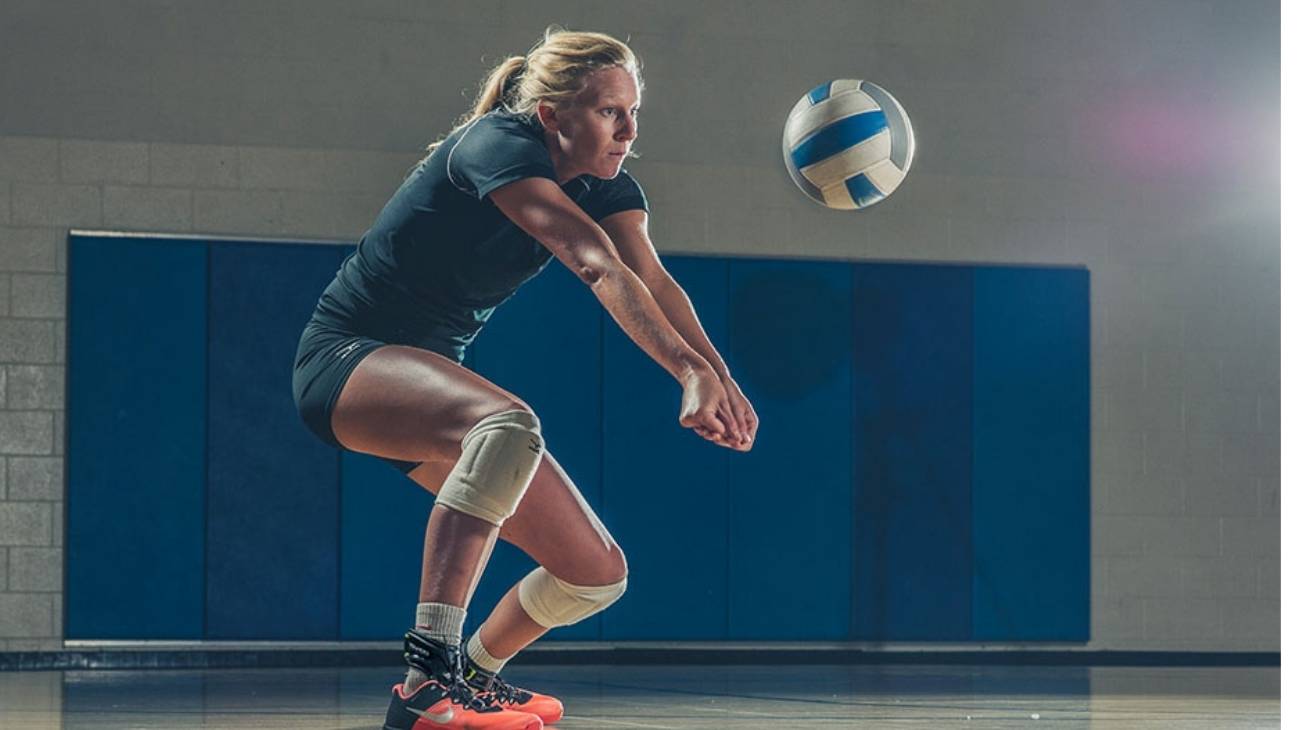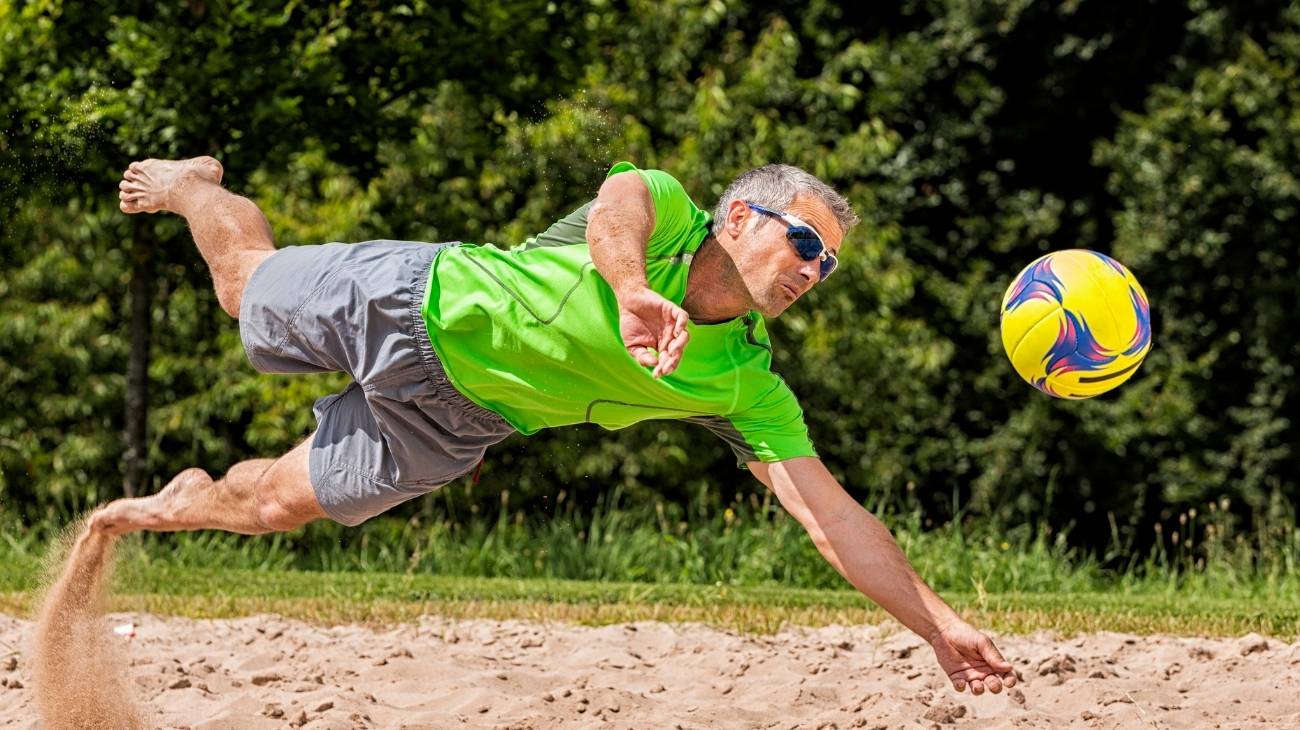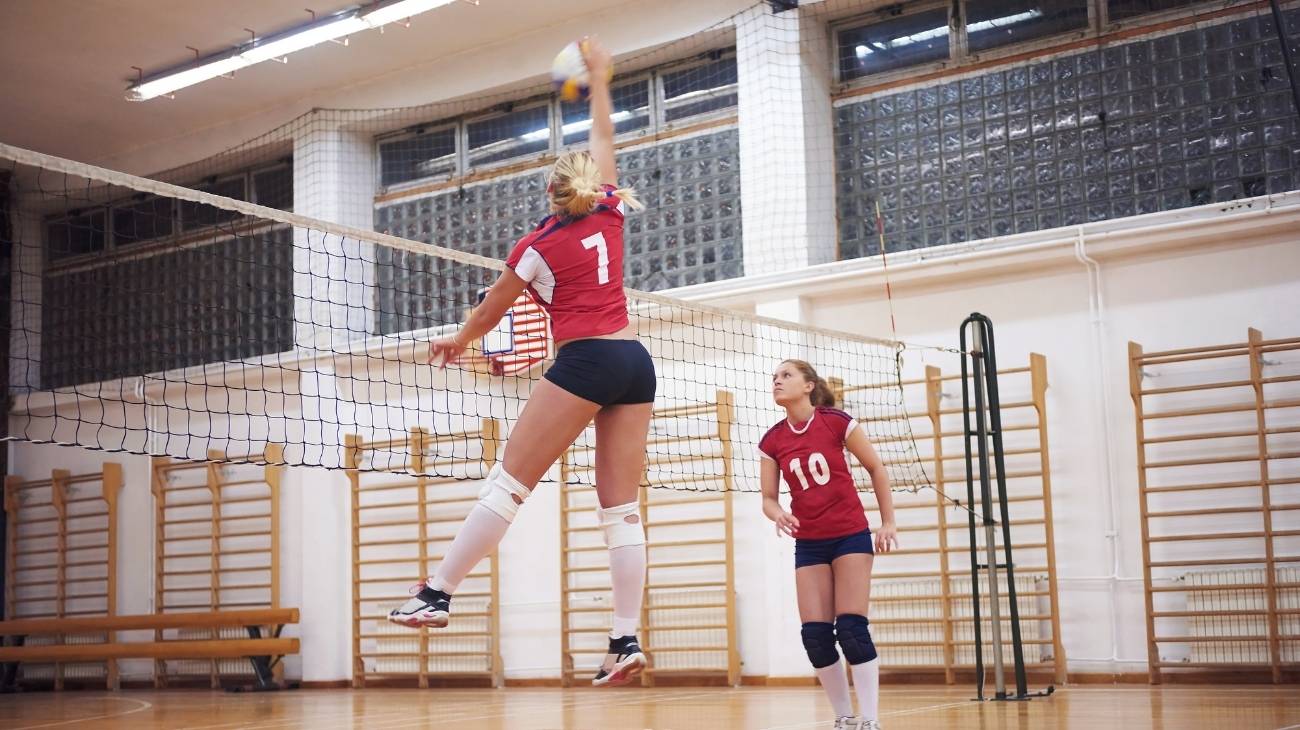Sports injuries to the ankle in volleyball are by no means exceptional. In fact, they occur frequently, especially ankle sprains. The repetitive jumping and lateral movements associated with the sport are the main culprits.
Here we bring you a list of the most common ankle injuries in volleyball. Stay with us and you will learn what each one of them is and why they originate in this sport. Plus, we'll show you how to treat these conditions with the PRICE therapy. Here we go!
What are the most common types of ankle injuries when playing volleyball?
Common ankle injuries in volleyball can be divided into two categories: traumatic and overuse. Of the first group, ankle sprains are undoubtedly the most frequent. Of the second, stress fractures of the bones that make up this joint (tibia, fibula and talus) stand out.
The jumps and side-to-side movements that volleyball players make on the court are the main risk factors for these injuries in these athletes. The effect of these movements is more significant when they are performed on hard ground. This is why these injuries are more common in court volleyball than beach volleyball, although they do occur in beach volleyball.
The most common sports injuries to the ankle in volleyball are:
Ankle sprains
This is considered the most common acute ankle injury in volleyball. It consists of the stretching or tearing (total or partial) of the ligaments present in this joint. In most cases it is an inversion ankle sprain, in which mainly the external lateral ligaments are damaged.
It is caused by trauma that forces the ankle out of position. It usually occurs in volleyball due to forced supination of the foot, usually when a player lands on another player's foot. This happens especially during blocks or spikes at the net. Associated symptoms are: Pain, tenderness, swelling, bruising, reduced range of motion, instability and crepitus.
Stress fracture of the ankle
In general, a stress fracture is a small break or crack in a bone. It is commonly caused by overuse, due to repeated application of mild to moderate force. It can also be caused by pre-existing bone disease such as osteoporosis.
It frequently occurs in the foot and lower leg area, where the weight of the body is supported. The bones that make up the ankle joint (tibia, fibula and talus) are prone to this type of fracture. In general, this injury causes local pain that worsens during activities that put pressure on the affected bone. Swelling, tenderness and bruising of the area may also occur.
Posterior tibial tendon dysfunction (PTTD)
Occurs when the posterior tibial tendon is unable to perform its function satisfactorily due to a change or injury to the tendon. This tendon connects the muscle of the same name that originates in the calf to various bones of the foot, passing through the inner side of the ankle. It is vital to the structure and mechanics of the foot, especially because it supports the plantar arch.
PTTD is a disorder mainly caused by overuse. Therefore, playing sports that involve repeated jumping and running is considered a risk factor for this condition. In general, symptoms include: pain on the inside of the foot and ankle, flattening of the plantar arch and inward rolling of the ankle. There may also be swelling in the area.
Achilles tendonitis
This is an inflammation of the Achilles tendon, a band of connective tissue that connects the calf muscles to the heel bone (calcaneus). Although it is not an ankle injury as such, its symptomatology occurs in the nearby area. It is characterised by pain along this tendon, usually triggered by movement (running, jumping and so on). Stiffness may also occur in this area.
The Achilles tendon can become inflamed when subjected to repetitive or intense strain. Frequent jumping and moving in volleyball is central to the aetiology of this injury in volleyball players. If this condition is not treated in time, the tendon may tear.
Calcaneal apophysitis
Also known as server's disease, this is an inflammation of the growth plate of the calcaneus (heel bone). It is not an injury to the ankle itself, but occurs in the nearby area. It is characterised by pain in the back, side and/or bottom of the heel, which usually worsens with movements such as walking, running and jumping. It can occur in one or both feet.
This injury is mainly caused by repetitive or excessive stress on the calcaneus. It is also often associated with an accelerated growth of this bone relative to the adjacent muscles and tendons, which can create increased stress on the area. Thus, it is common in sports involving jumping or running, including volleyball. It should be noted that it mainly affects patients between 8 and 14 years of age, as the calcaneus is developing until the age of 14.
Plantar fasciitis
Although this is not an ankle injury as such, it occurs in a nearby area of the foot and is very common in volleyball. It consists of inflammation of the plantar fascia, a connective tissue located on the sole of the foot. It connects the calcaneus to the toes and supports the arch.
Plantar fasciitis is considered an overuse injury, although often no direct cause is found. It is characterised by a stabbing pain in the heel, which often manifests itself upon waking in the morning.
Best products for ankle injury recovery in volleyball
Bestseller
-
2 Ankle Compression Sleeve (Black/Gray)
$19.95 -
2 Ankle Compression Sleeve (Green/Navy)
$19.95 -
2 Ankle Compression Sleeve (Pink/Bordeaux)
$19.95 -
Ice Pack for Foot - Cold Therapy Socks (Black)
$24.95 -
Ice Pack for Foot - Cold Therapy Socks (Green)
$24.95 -
Ice Pack for Foot - Cold Therapy Socks (Pink)
$24.95 -
Microwavable Heated Slippers (Hearts)
$24.95 -
Microwavable Heated Slippers (Oxford)
$24.95 -
Microwavable Heated Slippers (Sport)
$24.95 -
Microwaveable Heating Pad for Pain Relief (Hearts)
$19.95 -
Microwaveable Heating Pad for Pain Relief (Oxford)
$19.95 -
Microwaveable Heating Pad for Pain Relief (Sport)
$19.95 -
Sport Compression Socks (1 Pair) (Black/Gray)
$19.95 -
Sport Compression Socks (1 Pair) (Green/Navy)
$19.95 -
Sport Compression Socks (1 Pair) (Pink/Bordeaux)
$19.95
How to apply the RICE therapy to treat ankle injuries in volleyball?
The RICE medical care protocol is ideal for treating ankle sports injuries in volleyball, especially during the early stages. It is actually very simple to apply, just follow a series of steps. These are: rest, ice, compression and elevation. There is another similar but less known method, the PRICE protocol, which is really an update of the RICE. It adds a new step: protection.
Here's how to apply the PRICE therapy to common ankle injuries in volleyball:
- Protection: This step basically consists of protecting the ankle. It involves stopping the sporting activity immediately before further damage occurs. In addition, it is important to avoid movements that are harmful, therefore the use of an ankle brace or similar immobiliser is recommended.
- Rest: In this step you should rest the ankle for approximately 48 hours. Keep in mind that it is necessary to make non-injurious movements or stiffness will occur in this joint.
- Ice: You should then apply cryotherapy to the ankle to reduce pain and inflammation. This can be done with the help of a compress cooled to a temperature of 10-20°C. Just place it on the injury. Just place it on the injury for 20 minutes, about 6 to 8 times a day.
- Compression: Compressing the ankle will help provide greater stability and firmness. It will also promote circulation, significantly helping to reduce swelling. In this step, it is usual to bandage the ankle with a flexible fabric that allows safe movement. Be careful, remember that if you tighten too much you could cut off circulation.
- Elevation: In this step you should elevate the ankle to a level above the heart. You can do this by resting it on a pillow or cushioned surface. This will help to reduce swelling and relieve pain.
References
- Bahr, R., Karlsen, R., Lian, Ø., & Øvrebø, R. V. (1994). Incidence and mechanisms of acute ankle inversion injuries in volleyball: a retrospective cohort study. The American journal of sports medicine, 22(5), 595-600. https://journals.sagepub.com/doi/abs/10.1177/036354659402200505
- Aagaard, H., & Jørgensen, U. (1996). Injuries in elite volleyball. Scandinavian journal of medicine & science in sports, 6(4), 228-232. https://onlinelibrary.wiley.com/doi/abs/10.1111/j.1600-0838.1996.tb00096.x
- Garrick, J. G., & Requa, R. K. (1988). The epidemiology of foot and ankle injuries in sports. Clinics in sports medicine, 7(1), 29-36. https://www.sciencedirect.com/science/article/abs/pii/S027859192030956X
- Glick, J. M., Gordon, R. B., & Nishimoto, D. (1976). The prevention and treatment of ankle injuries. The American journal of sports medicine, 4(4), 136-141. https://journals.sagepub.com/doi/abs/10.1177/036354657600400402
- Garrick, J. G., & Requa, R. K. (1989). The epidemiology of foot and ankle injuries in sports. Clinics in podiatric medicine and surgery, 6(3), 629-637. https://europepmc.org/article/med/2568882
- Eerkes, K. (2012). Volleyball injuries. Current sports medicine reports, 11(5), 251-256. https://journals.lww.com/acsm-csmr/Fulltext/2012/09000/Volleyball_Injuries.10.aspx
- Verhagen, E. A. L. M., Van der Beek, A. J., Bouter, L. M., Bahr, R. M., & Van Mechelen, W. (2004). A one season prospective cohort study of volleyball injuries. British journal of sports medicine, 38(4), 477-481. https://bjsm.bmj.com/content/38/4/477.short
- Bahr, R., & Reeser, J. C. (2003). Injuries among world-class professional beach volleyball players: the Federation Internationale de Volleyball beach volleyball injury study. The American journal of sports medicine, 31(1), 119-125. https://journals.sagepub.com/doi/abs/10.1177/03635465030310010401
- Bahr, R., & Bahr, I. A. (1997). Incidence of acute volleyball injuries: a prospective cohort study of injury mechanisms and risk factors. Scandinavian journal of medicine & science in sports, 7(3), 166-171. https://onlinelibrary.wiley.com/doi/abs/10.1111/j.1600-0838.1997.tb00134.x
- Agel, J., Palmieri-Smith, R. M., Dick, R., Wojtys, E. M., & Marshall, S. W. (2007). Descriptive epidemiology of collegiate women's volleyball injuries: National Collegiate Athletic Association Injury Surveillance System, 1988–1989 through 2003–2004. Journal of athletic training, 42(2), 295-302. https://cdr.lib.unc.edu/concern/articles/4b29bc963

